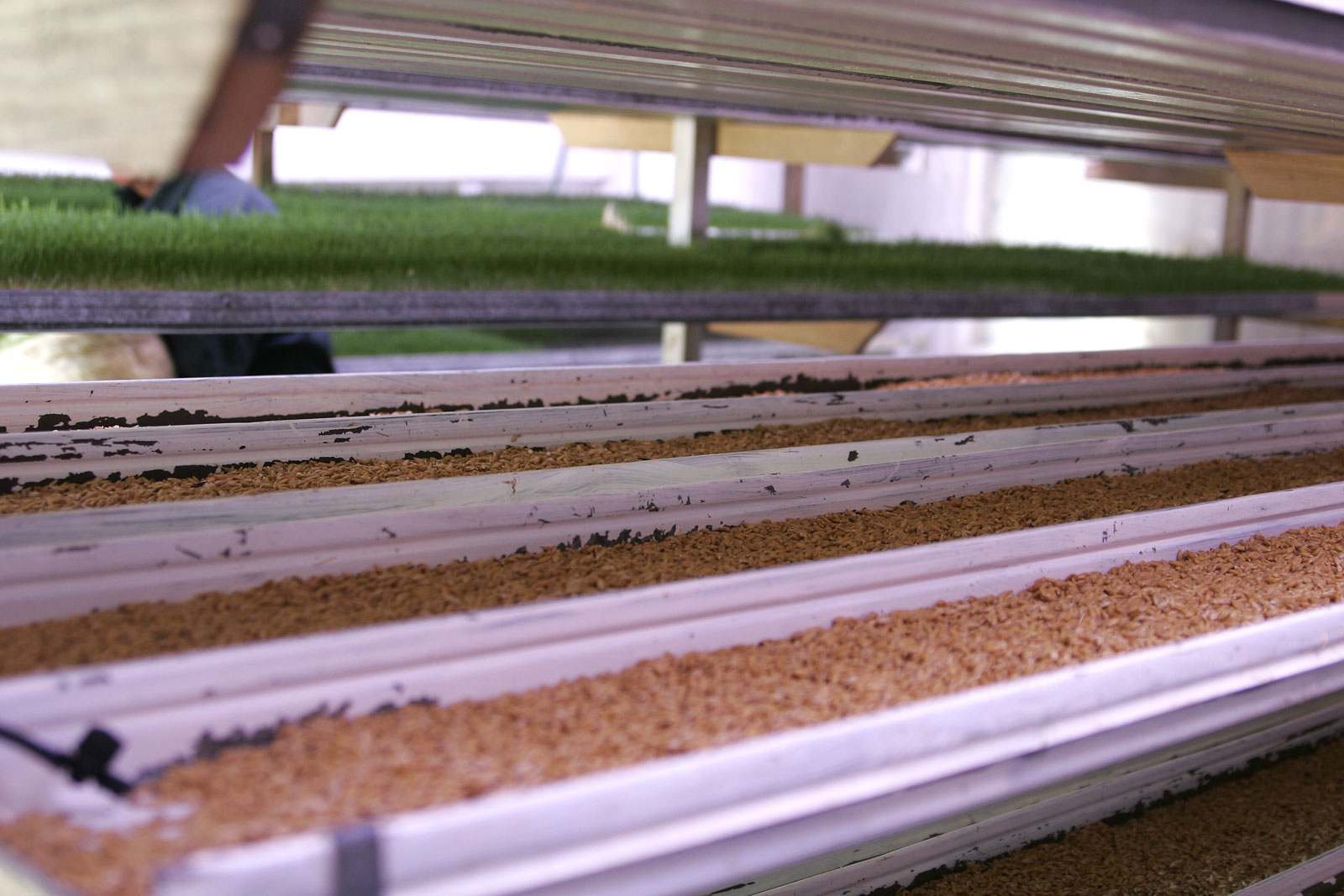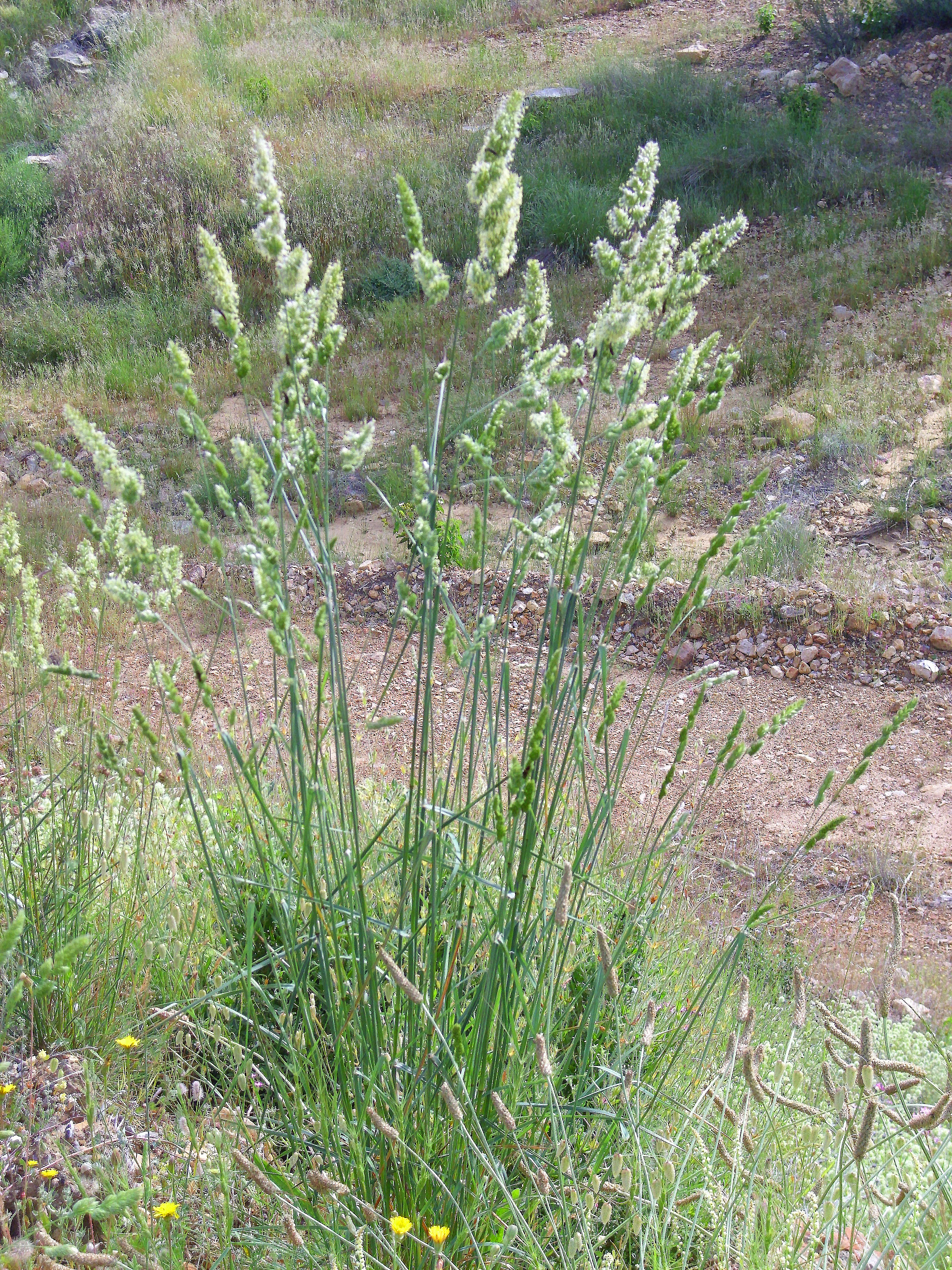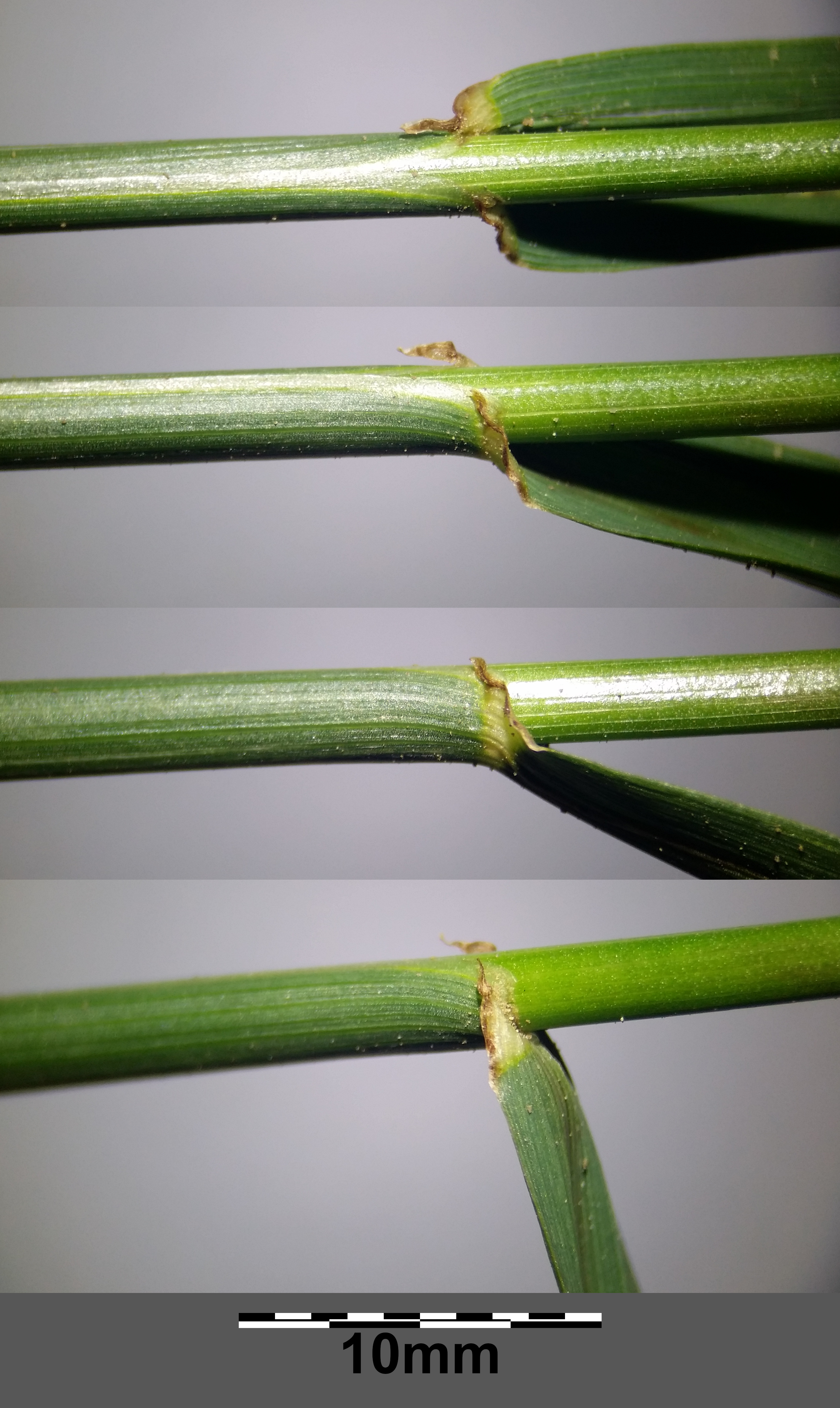|
Forage
Forage is a plant material (mainly plant leaves and stems) eaten by grazing livestock. Historically, the term ''forage'' has meant only plants eaten by the animals directly as pasture, crop residue, or immature cereal crops, but it is also used more loosely to include similar plants cut for fodder and carried to the animals, especially as hay or silage. While the term ''forage'' has a broad definition, the term ''forage crop'' is used to define crops, annual or biennial, which are grown to be utilized by grazing or harvesting as a whole crop. Common forages Grasses Grass forages include: *''Agrostis'' spp. – bentgrasses **''Agrostis capillaris'' – common bentgrass **''Agrostis stolonifera'' – creeping bentgrass *''Andropogon hallii'' – sand bluestem *''Arrhenatherum elatius'' – false oat-grass *''Bothriochloa bladhii'' – Australian bluestem *''Bothriochloa pertusa'' – hurricane grass *''Brachiaria decumbens'' – Surinam grass *''Brachiaria humidicola'' – kor ... [...More Info...] [...Related Items...] OR: [Wikipedia] [Google] [Baidu] |
Festuca Arundinacea
''Lolium arundinaceum'', commonly known as tall fescue, is a cool-season, perennial C3 grass species native to Europe and introduced to North America and other parts of the world. It naturally occurs in grasslands and coastal marshes.Texas Parks and Wildlife Department (n.d.). Tall Fescue (''Lolium arundinaceum''). Texas Invasive Plant Database/ref> Tall fescue is grown in a range of Cultivar, cultivars, widely used for livestock forage, in lawns and recreational areas as turf, and occasionally for managing soil erosion. Most publications have used the names ''Festuca arundinacea'' or, more recently, ''Schedonorus arundinaceus'' for this species, but DNA studies appear to have settled a long debate that it should be included within the genus ''Lolium'' instead. Description Tall fescue is a long-lived tuft-forming perennial with erect to spreading hollow flowering stems up to about tall (exceptionally up to 200 cm) which are hairless (glabrous), including the leaf sheath ... [...More Info...] [...Related Items...] OR: [Wikipedia] [Google] [Baidu] |
Brachiaria Decumbens
''Urochloa eminii'', commonly known as Congo grass, is a species of forage crop in the family Poaceae Poaceae ( ), also called Gramineae ( ), is a large and nearly ubiquitous family of monocotyledonous flowering plants commonly known as grasses. It includes the cereal grasses, bamboos, the grasses of natural grassland and species cultivate ... that is grown throughout the humid tropics. With fast growth at the beginning of the wet season due to strong seedling vigour, ease of establishment, good seed production and yield and the ability to suppress weeds it has the ability to become developed into the most important forage crop planted in the tropics. With the aid of genomic tools to research the genotype and gain more information there is the ability to increase breeding programs which are currently rather limited. Description ''Urochloa eminii'' is a tufted grass, that grows as a creeping perennial with short rhizomes that form a dense leafy cover over the ground. ... [...More Info...] [...Related Items...] OR: [Wikipedia] [Google] [Baidu] |
Chloris Gayana
''Chloris gayana'' is a species of grass known by the common name Rhodes grass. It is native to Africa but it can be found throughout the tropical and subtropical world as a naturalized species. It can grow in many types of habitat. It is also cultivated in some areas as a palatable graze for animals and a groundcover to reduce erosion and quickly revegetate denuded soil. It is tolerant of moderately saline and alkaline soils and irrigation. Description This is a perennial grass which can reach one half to nearly three meters in height and spreads via stolons. It forms tufts and can spread into wide monotypic stands. The inflorescence is a single or double whorl of fingerlike racemes up to 15 centimeters long. Each spikelet in the raceme is a few millimeters long and contains one or two fertile florets and up to four sterile florets. Growing conditions Its seasonal growth is in the spring and summer and its rainfall requirement is 600–750 mm per year. [...More Info...] [...Related Items...] OR: [Wikipedia] [Google] [Baidu] |
Grazing
In agriculture, grazing is a method of animal husbandry whereby domestic livestock are allowed outdoors to free range (roam around) and consume wild vegetations in order to feed conversion ratio, convert the otherwise indigestible (by human digestive system, human gut) cellulose within grass and other forages into meat, milk, wool and other animal products, often on land that is unsuitable for arable farming. Farmers may employ many different strategies of grazing for crop yield, optimum production: grazing may be continuous, seasonal, or rotational grazing, rotational within a grazing period. Longer rotations are found in ley farming, alternating arable and fodder crops; in rest rotation, deferred rotation, and mob grazing, giving grasses a longer time to recover or leaving land fallow. Patch-burn sets up a rotation of fresh grass after burning with two years of rest. Conservation grazing proposes to use grazing animals to improve the biodiversity of a site. Grazing has existed ... [...More Info...] [...Related Items...] OR: [Wikipedia] [Google] [Baidu] |
Silage
Silage is fodder made from green foliage crops which have been preserved by fermentation (food), fermentation to the point of souring. It is fed to cattle, sheep and other ruminants. The fermentation and storage process is called ''ensilage'', ''ensiling'', or ''silaging''. The exact methods vary, depending on available technology, local tradition and prevailing climate. Silage is usually made from grass crops including maize, sorghum or other cereals, using the entire green plant (not just the grain). Specific terms may be used for silage made from particular crops: ''oatlage'' for oats, ''haylage'' for alfalfa (''haylage'' may also refer to high dry matter silage made from hay). History Using the same technique as the process for making sauerkraut, green fodder was preserved for animals in parts of Germany since the start of the 19th century. This gained the attention of French agriculturist Auguste Goffart of Sologne, near Orléans. He published a book in 1877 which describ ... [...More Info...] [...Related Items...] OR: [Wikipedia] [Google] [Baidu] |
Fodder
Fodder (), also called provender (), is any agriculture, agricultural foodstuff used specifically to feed domesticated livestock, such as cattle, domestic rabbit, rabbits, sheep, horses, chickens and pigs. "Fodder" refers particularly to food given to the animals (including plants cut and carried to them), rather than that which they forage for themselves (called forage). Fodder includes hay, straw, silage, compressed and Compound feed, pelleted feeds, oils and mixed rations, and sprouting, sprouted grains and legumes (such as bean sprouts, fresh malt, or brewing#Brewer's spent grain, spent malt). Most animal feed is from plants, but some manufacturers add ingredients to processed feeds that are of animal origin. The worldwide animal feed trade produced 1.245 billion tons of compound feed in 2022 according to an estimate by the International Feed Industry Federation, with an annual growth rate of about 2%. The use of agricultural land to grow feed rather than human food can be ... [...More Info...] [...Related Items...] OR: [Wikipedia] [Google] [Baidu] |
Brachiaria Humidicola
''Urochloa'', commonly known as signalgrass,''Urochloa''. USDA PLANTS. is a of plants in the grass family, native to and regions of , Africa, Australia, the |
Festuca
''Festuca'' (fescue) is a genus of flowering plants belonging to the grass family Poaceae (subfamily Pooideae). They are evergreen or herbaceous perennial tufted grasses with a height range of and a cosmopolitan distribution, occurring on every continent except Antarctica. The genus is closely related to ryegrass (''Lolium''), and recent evidence from phylogenetic studies using DNA sequencing of plant mitochondrial DNA shows that the genus lacks monophyly. As a result, plant taxonomists have moved several species, including the forage grasses tall fescue and meadow fescue, from the genus ''Festuca'' into the genus ''Lolium'', or alternatively into the segregate genus '' Schedonorus''. Because the taxonomy is complex, scientists have not determined how many true species belong to the genus, but estimates range from more than 400 to over 640. Fescue pollen is a significant contributor to hay fever. Taxonomy The genus ''Festuca'' represents a major evolutionary line of ... [...More Info...] [...Related Items...] OR: [Wikipedia] [Google] [Baidu] |
Dactylis Glomerata
''Dactylis glomerata'' is a species of flowering plant in the grass family Poaceae, known as cock's-foot,Interactive Flora of NW Europ''Dactylis glomerata'' (Cock's-foot)/ref> also colloquially as orchard grass, or cat grass (due to its popularity for use with cats, domestic cats). It is a cool-season perennial C3 carbon fixation, C3 tussock grass, tufted grass native throughout most of Europe, temperate Asia, and northern Africa.Flora Europaea''Dactylis glomerata'' Distribution ''Dactylis glomerata'' occurs from sea level in the north of its range, to as high as 4,000 metres in elevation in the south of its range in Pakistan. It is widely used for hay and forage. It is a principal species in the widespread British National Vegetation Classification, National Vegetation Classification habitat community British NVC community MG1, MG1 (''Arrhenatherum elatius'' grassland) in the United Kingdom, and so can be found with ''Arrhenatherum elatius'' (false oat grass). It can be found ... [...More Info...] [...Related Items...] OR: [Wikipedia] [Google] [Baidu] |
Bothriochloa Pertusa
''Bothriochloa pertusa'' is a species of grass. It is widely used as a fodder and a graze for livestock. Common names for the plant include hurricane grass, Indian couch grass, Indian-bluegrass, pitted bluestem, Seymour grass, Barbados sourgrass,''Bothriochloa pertusa'' (L.) A. Camus. In: Duke, J. A. ''Handbook of Energy Crops''. 1983. Unpublished. Center for New Crops & Plant Products. Purdue University. Antigua hay, pitted beardgrass,''Bothriochloa pertusa''. Global Invasive Species Database, Invasive Species Specialist Group (ISSG), IUCN Species Survival Commission. sweet pitted grass, silver grass ( [...More Info...] [...Related Items...] OR: [Wikipedia] [Google] [Baidu] |
Festuca Pratensis
''Lolium pratense'', meadow fescue is a perennial species of grass, which is often used as an ornamental in gardens, and is also an important forage crop. It grows in meadows, roadsides, old pastures, and riversides on moist, rich soils, especially on loamy and heavy soils. Most publications have used the names ''Festuca pratensis'' or, more recently, ''Schedonorus pratensis'' for this species, but DNA studies appear to have settled a long debate that it should be included within the genus ''Lolium'' instead. Description Meadow fescue is a tuft-forming perennial (called a bunchgrass in the US), with erect to spreading hollow flowering stems up to about 1 m (3 ft) tall (exceptionally up to 120 cm) which are quite hairless (glabrous), including the leaf sheaths. At the top of the sheath is a short (1 mm) ligule and pointed auricles that can wrap slightly around the stem. The leaf blade is flat, up to about 8 mm wide, and also glabrous, but rough on the to ... [...More Info...] [...Related Items...] OR: [Wikipedia] [Google] [Baidu] |







